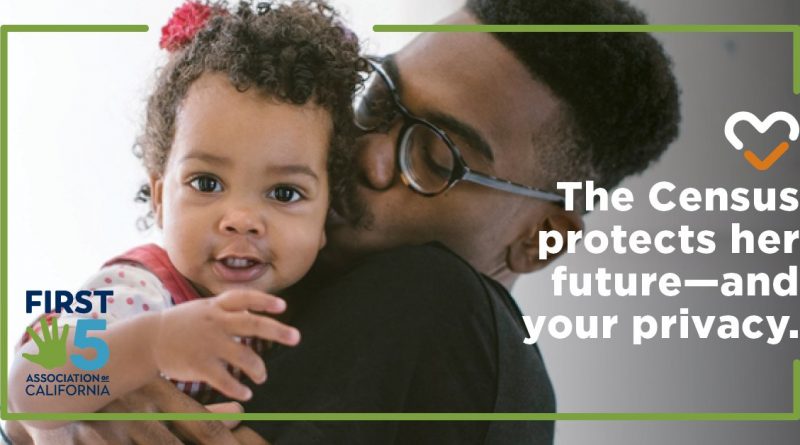Webinar: How, and Why, to Encourage California Families to Participate in the Census
It only happens once every 10 years, and there’s a lot riding on it.
It’s the U.S. Census, which officially starts April 1. It determines how the federal budget pie is sliced up, not to mention how much representation we get in Congress. An undercount could cost California more than $1.5 billion across all federal programs (including CalWORKs, CalFresh, Medi-Cal, Head Start, and Section 8), and would also mean less money for local schools, hospitals, roads, and more.
But even though the U.S. Census Bureau is bound by law to keep responses anonymous and confidential — no sharing with ICE or any law enforcement agency, or with landlords! — many families are reluctant to participate. Many may also mistakenly believe that young kids and babies don’t need to be counted.
First 5 Association of California is one of the groups leading the effort in California to get families and young children counted. Association trainer Ana Lugo presented this webinar on February 13, 2020, for Outreach Specialists in the Welcome Baby program, which is part of the First 5 LA-funded Family Strengthening Network in Los Angeles County. A big thanks to Ana and First 5 Association!
See below for lots of related resources.
Resources:
The presentation slides from this webinar are available here.
See First 5 LA’s information on Census participation, including its Winter Parenting Guide (English/Spanish).
First 5 Association of California assembled this training guide that includes Census resources, which we’ve reprinted (with a few additions) here:
Toolkits and More
- 2020 Census Disability Community Toolkit
- First 5 Toolkit
- We Count!
- Asian Americans Advancing Justice’s 2020 Census Campaign
- 2020 Census Faith Toolkit
- Cal Nonprofits – 2020 Census Toolkit
- Censoteria – Latino Community Foundation
- “Babies Need an Accurate Census”: Resources From Zero to Three
Key Messages to Share With Families (courtesy of Zero to Three)
- “You can fill out the Census on your own schedule and it only takes about 10 minutes to complete.”
- “Counting your young children in the Census means your local school will get more funding for our children.”
- “The Census only happens once every 10 years. So, if we don’t count a 2 year old now, our community will have less funding for education, child care, and other services children need for most of their childhood.”
Information on the Census
- US Census Bureau: Information on all things Census from the Federal Government’s perspective. See the Questions Planned for the 2020 Census and American Community Survey
- California Census 2020: Information on the campaign that our state is running.
- First 5 Association: Information on the statewide campaign for the 0-5 population. Access to other partners, resources, trainings, and press toolkit.
- Public Policy Institute of California – CA Population: Data on the demographics of California exploring how an undercount of minorities will affect our state.
- Population Reference Bureau: Breakdown of the Census questions and the why behind them.
- The George Washington University Institute of Public Policy: Fiscal impacts of Census: “Over three hundred federal spending programs rely on data derived from the Decennial Census to guide the geographic distribution of funds to states, counties, cities, and households.”
- List of Hard to Count Populations: As defined by the Census Bureau
History of Race and the Census
- Pew Research Center: What Census Calls Us: How Census Race Categories Have Changed Over Time
- Census Bureau – Historical Timeline: This timeline is according to the Census Bureau.
- Racial Equity Tools Resources: This curriculum was developed by David Rogers and Moira Bowman for use in the Western States Center’s Dismantling Racism Program.
- Article 1, Section 2 of the United States Constitution: “Representatives and direct Taxes shall be apportioned among the several States which may be included within this Union, according to their respective Numbers, which shall be determined by adding to the whole Number of free Persons, including those bound to Service for a Term of Years, and excluding Indians not taxed, three fifths of all other Persons.”

